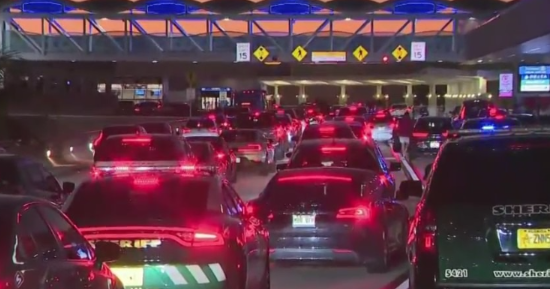More Red Light Traffic Cams Go Live In Pembroke Pines
PEMBROKE PINES (CBS4) -- Consider yourself warned. The City of Pembroke Pines activated four new red light cameras on Friday. The cameras are now active at these four intersections:
NB Flamingo Road at Sheridan Street
EB Pines Blvd. at 118th Avenue
EB Johnson Street at Colony Point Drive
WB Pembroke Road at SW 129th Avenue
Cameras already in operation are located at:
NB Dykes Road at Pines Boulevard
EB SW 129th Avenue at Pines Boulevard
EB Taft Street at North Hiatus Road
NB North Hiatus Road at Taft Street
NB SW 136th Avenue at Pines Boulevard
Click here to see a map of some of the red light cameras across South Florida. Click Here to send CBSMiami your red lights to add to the map.
Warnings will be issued to drivers at the four new intersections for the next month. After May 15th, drivers will face a 158-dollar ticket if caught on camera running a red light.
The city will activate 19 more cameras next month at both directions of Pines at 136th Avenue, Flamingo Road, Palm Avenue, University Drive and 72nd Avenue; eastbound Pines at Dykes Road and Southwest 150th Avenue/Grand Palms Drive; westbound Pines at Northwest 155th Avenue; northbound Flamingo at Pines; and southbound University at Pines.
According to the City of Pembroke Pines web site, the goal of the red light camera program is to reduce red-light running violations, crashes, and injuries without impacting city funds.
But do red light cameras make sense financially?
The goal is to pay for them with the money collected from tickets. But Pembroke Pines Mayor Frank Ortis said the city has not made any money yet. In fact, the costs of the running the cameras and prosecuting the tickets have been higher than the money collected from tickets.
CBS4 asked then why do they want to install 19 more cameras? The mayor said it's a public safety matter.
"If we save lives even one or two lives, I'm very happy about that," Mayor Ortis said.
When pressed for an answer about who has been paying for the cameras he referred CBS 4 to the city attorney who told CBS4's Silva Harapetian that the city has so far paid the company that installed the cameras $95,000.
But city attorney could not say where that money came from. The income from red light violators is not enough to pay for the cameras; and it's unclear if the taxpayers have been footing the bill.
But Mayor Ortis said what really matters is lives.
The state's Revenue Estimating Conference has projected that red light camera programs will bring roughly $100 million into the state and $75 million into local governments over the next two years.
State Senator Rene Garcia said the recently passed state law which allows the red light cameras is an "unwarranted, big-brother initiative." He's filed a bill to repeal the law. Garcia said that the red light cameras have simply become a way for local governments to use "these cameras to tax their citizens under the disguise of safety."
Garcia's bill goes head to head with Insurance Institute for Highway Safety data which shows the cameras saved roughly 159 lives over four years in a study of 14 major cities.



